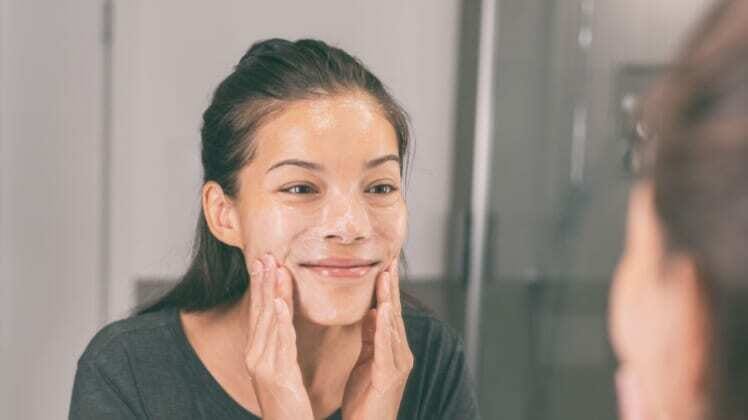
If you follow skin trends on social media, you’ve likely heard of slugging. Coined by K-Beauty and popularized by TikTok, the skincare technique entered the scene sometime this past winter and has been gaining momentum ever since. With so many videos of beauty influencers and skin experts demonstrating the technique online — for perspective, the #slugging tag on TikTok has over 15.5 million views and turns up thousands of posts on Instagram — it makes sense that you might be tempted to try out the trend yourself. Here’s what dermatologists want you to know first.
What Is Slugging?
While it sounds somewhat icky, you can ignore the name. Unlike the trendy snail facials that went viral a few years back, skin slugging doesn’t actually involve any slimy secretion from slugs. Simply put, the technique consists of applying a generous, gooey layer of a petrolatum-based ointment like Vaseline or Aquaphor over your skin before bed, then washing it off in the morning.
What does this do exactly? Petrolatum is occlusive, meaning it forms a protective layer on the surface of skin that helps repair the compromised skin barrier and prevents transepidermal water loss. “Slugging is a great way to heal and protect sensitive or dry skin,” Dr. Shari Marchbein, MD, a board-certified dermatologist in New York City, explains in an Instagram Reel.
The result: Applying a petrolatum-based ointment overnight will leave you with softer, more radiant skin come morning. You may also notice less dry patches and that your skin stays more moisturized throughout the day, though these results are cumulative.
Is Slugging Good for All Skin Types?
While slugging is great for dry skin and can even be beneficial for skin conditions like eczema, Dr. Debra Jaliman, a board-certified dermatologist in New York City, does not recommend slugging for acne-prone skin. “Those who have oily skin or are prone to breakouts may find that petrolatum is too occlusive and can worsen acne conditions,” she says. “I would recommend sealing your skin with a non-comedogenic hydrating cream containing ceramides and hyaluronic acid instead.”
How to Get Started
As Dr. Marchbein explains, slugging should always be the final step in your nighttime skincare routine, since anything you apply on top won’t be able to penetrate through. Start by cleansing and applying your serums and moisturizers as normal, then apply a thin layer of ointment all over your face. “Slugging can even be used as the final step in the ‘Retinoid Sandwich Technique’ to minimize irritation,” says Dr. Marchbein. In other words, ‘sandwich’ or apply your retinol treatment between a moisturizer and petrolatum-based ointment.
If you have combination skin, consider more of a targeted approach, treating only the areas that are dry or dehydrated. And regardless of your skin type, if you’d like to try slugging, start working it into your routine gradually; unless your skin is seriously dry, this is not something you necessarily need to do every night to see results. Consider the seasons, too. While slugging is a wonderful treatment during winter months, you may find that the technique is too heavy during the summer when there is more moisture in the air.

